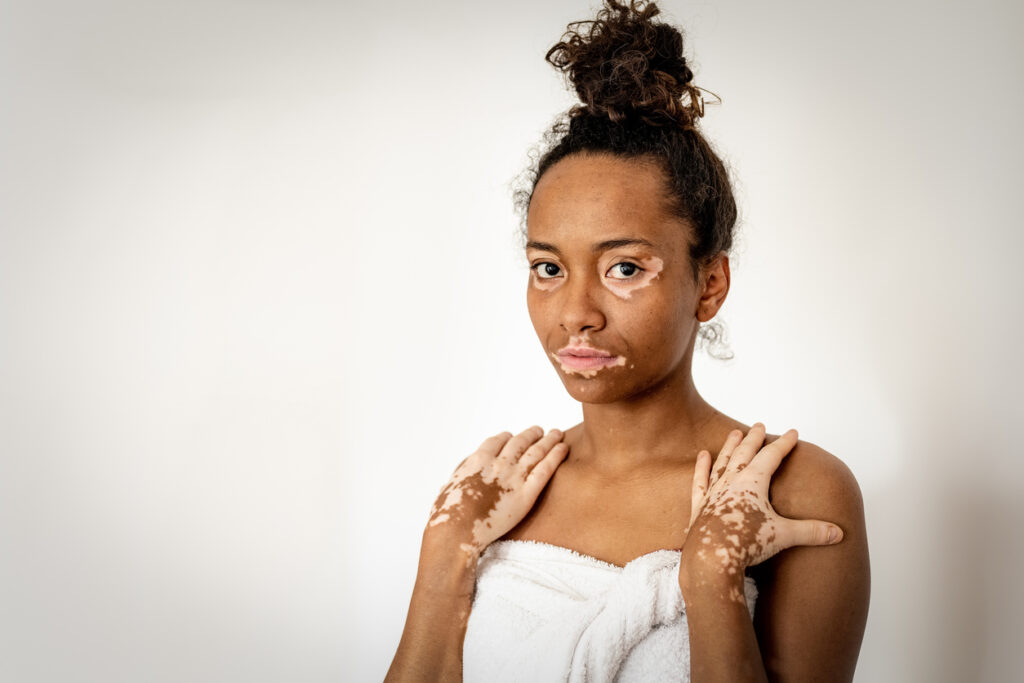Combining a Janus kinase (JAK) inhibitor with light therapy may enhance repigmentation for patients with nonsegmental vitiligo, according to a new study in in the Journal of the American Academy of Dermatology.
Researchers led by Emma Guttman-Yassky, MD, Ph.D., Waldman Professor and System Chair of the Kimberly and Eric J. Waldman Department of Dermatology at the Icahn School of Medicine at Mount Sinai in New York City, evaluated the efficacy and safety of ritlecitinib (Litfulo, Pfizer) alone and in combination with narrow-band ultraviolet B (nbUVB) phototherapy at inducing recovery of skin color in areas that had lost it. Ritlecitinib is being investigated for the treatment of nonsegmental vitiligo.
Improvement in Facial Repigmentation
In a 24-week extension of a Phase 2b clinical trial, the researchers found that patients receiving ritlecitinib with nbUVB phototherapy experienced greater improvements in vitiligo severity compared to those receiving ritlecitinib alone. Notably, the combination led to a mean 69.6% improvement in facial repigmentation, compared to 55.1% with ritlecitinib alone. Total body repigmentation also improved more significantly with the combination therapy, the study showed.
“These results are encouraging and suggest that this combination may provide added benefit for patients with vitiligo,” says Dr. Guttman-Yassky in a news release. “Our findings underscore the potential of precision therapies, including targeted oral treatments, to be safely integrated with traditional modalities like light therapy to enhance patient outcomes.”
The study had its share of limitations, including a relatively small sample size of 230 (187 patients that received ritlecitinib monotherapy and 43 that received ritlecitinib plus nbUVB) and an exploratory design.
“These findings represent another step forward in our mission to offer hope and improved quality of life to people living with vitiligo and other dermatologic conditions,” sats Dr. Guttman-Yassky.


